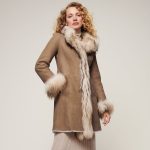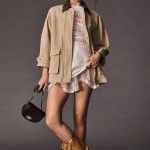The ermine coat has long been associated with luxury, elegance, and nobility. Made from the soft, white fur of the ermine—a small weasel native to Europe and Asia—these coats have become emblematic of status throughout history. This article delves into the captivating allure of the ermine coat, exploring its historical significance, cultural impact, contemporary styling options, ethical considerations, and its enduring presence in the fashion world.
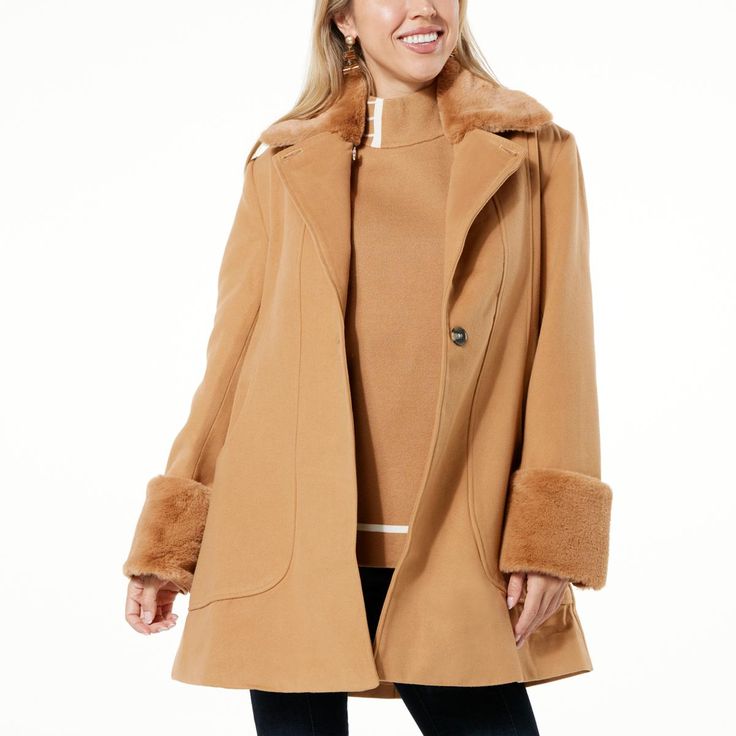
Historical Significance
The history of the ermine coat dates back to ancient times, where it became emblematic of wealth and power. Ermine fur was particularly favored by royalty and the aristocracy, often incorporated into regal garments. The first recorded use of ermine in clothing can be traced back to the Roman Empire, where it was utilized in togas worn by the elite. The luxurious texture and striking color of the fur made it highly sought after.
During the medieval period, ermine was used extensively in Europe, especially in England. Monarchs and high-ranking officials wore it as part of their ceremonial attire. The fur became an essential element of the robes of kings and queens, symbolizing regal authority. In England, the ermine coat became a defining aspect of the ceremonial robes worn by members of the House of Lords, referred to as the “manto.” This use of ermine clearly reflected the wearer’s social standing—those adorned in such exquisite materials were often hailed as figures of power and influence.
As time progressed, the ermine coat took on further significance in various cultures. In France, for instance, it became a symbol of justice; the ermine’s winter coat was used to adorn the robes of judges, thereby reinforcing the connection between the animal’s purity and the role of justice in society. In art, the ermine coat frequently appears in portraits of aristocrats and dignitaries, marking its role as a staple in the visual representation of wealth and tradition.
Cultural Impact
Beyond its association with nobility, the ermine coat has made its way into various cultural realms. Literature, art, and music have all embraced the elegance and allure of the ermine coat, cementing its status as a symbol of grandeur. Famous portraits from the Renaissance and Baroque periods often depict figures clad in ermine, emphasizing not just their wealth but also their importance in the social hierarchy.
One of the most notable examples is Leonardo da Vinci’s “Lady with an Ermine,” which portrays Cecilia Gallerani—a woman of high social standing—holding an ermine. This painting captures not only her beauty but also the elegance of the ermine coat, symbolizing her status and sophistication. The way da Vinci painted the ermine emphasizes its luxurious texture and vibrant white against the deep colors of Gallerani’s dress. This artistic portrayal helped entrench the ermine coat within the cultural fabric, reinforcing its association with nobility and grace.
In literature, characters donned in ermine coats are often depicted as figures of aspiration and glamor. Classic novels from the 18th and 19th centuries feature wealthy protagonists who wear luxurious furs as status symbols, subtly indicating their success and societal position. This cultural interplay has not only reinforced the coat’s status as more than just clothing but as an integral aspect of storytelling and character development.
In music, the ermine coat is similarly referenced, with artists and lyricists integrating it into their works as a symbol of opulence. The imagery of characters draped in ermine often evokes aspirations of wealth and success, further solidifying its position as a marker of affluence.
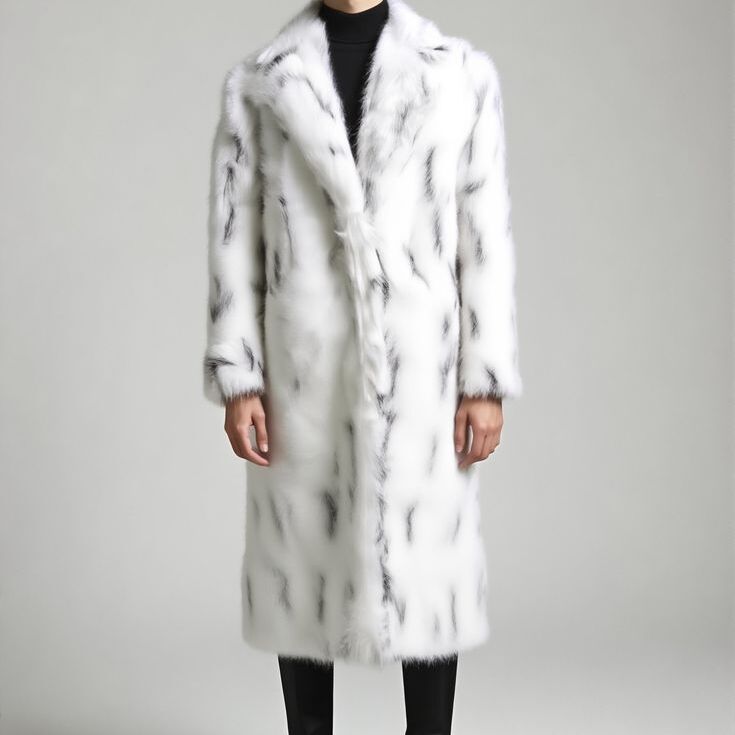
Fashion Evolution and Trends
The ermine coat has transcended its origins to become a staple of modern fashion. Its appeal has persisted through the ages, and contemporary designers have reimagined the ermine coat in innovative and diverse ways. High-fashion runways from Paris to Milan showcase styles that retain the coat’s luxurious essence while adapting it to contemporary tastes.
One of the fascinating aspects of the ermine coat is its versatility. Designers have taken the classic structure of the coat and introduced various silhouettes—from oversized trenches to sleek, fitted designs. The basic premise of the ermine coat remains the same: it is a timeless piece that adds sophistication to any outfit. Modern interpretations have seen it paired with bold, avant-garde pieces, emphasizing the contrast between classic luxury and contemporary design.
Accessories also play a crucial role in styling an ermine coat. While the coat itself serves as a statement piece, modern fashion emphasizes the integration of additional elements such as hats, scarves, and jewelry. Designers often advocate for simplicity in accessorizing to allow the coat to feature prominently in one’s outfit. This minimalist approach celebrates the coat’s inherent beauty and texture, making it the centerpiece of any ensemble.
Furthermore, fashion icons often embrace the ermine coat as an essential item for awards shows and red-carpet events. Celebrities like Cate Blanchett, Rihanna, and Janelle Monáe have worn magnificent ermine coats, showcasing their elegance and versatility. These appearances at high-profile events amplify the ermine coat’s status as a staple in the wardrobes of fashion-forward individuals.
Ethical Considerations
While the ermine coat remains a symbol of luxury, it has prompted ethical conversations in recent years. The production of fur garments has sparked significant debate regarding animal rights and sustainable fashion practices. As awareness grows, many consumers are opting for alternatives that reflect their values.
Critics of fur production highlight the issues surrounding animal welfare and environmental sustainability. The production processes often involve significant ecological footprints, especially concerning habitat destruction and energy consumption. In response, numerous designers and brands have been working toward a more sustainable approach, utilizing faux furs and ethically sourced materials to replicate the luxurious appearance of real fur. Faux fur has advanced considerably in quality, allowing for more accessible options for consumers without sacrificing aesthetics.
The fashion industry is facing increased scrutiny over its environmental and animal welfare impacts. In response, many organizations are promoting a shift toward ethical fashion practices. Brands embracing sustainability create garments that attract conscientious consumers. This approach also preserves the elegance of timeless pieces like the ermine coat.

Styling the Ermine Coat
Styling an ermine coat offers a multitude of possibilities, reflecting personal style while emphasizing the coat’s elegance and historical significance. Its neutral color and luxurious texture allow for countless pairings. Here are a few tips on how to style an ermine coat effectively:
- With Formal Attire: The classic pairing of an ermine coat with a tailored evening gown is timeless. Opt for bold colors or intricate patterns to create a striking contrast that highlights the coat. Especially during evening events, accessorize with statement jewelry to complete the sophisticated look. This combination showcases both the opulence of the coat and the wearer’s personal style.
- Casual Chic: For a modern twist, wear the ermine coat over a simple knitted sweater, high-waisted trousers, or tailored jeans. This juxtaposition of elegance and comfort creates an effortless yet sophisticated vibe. Pair the look with ankle boots or chic loafers to maintain a balance between relaxed and refined.
- Layering with Outerwear: An ermine coat can also be layered over a sleek trench coat or a stylish denim jacket for a fashionable yet functional outfit. Experimenting with layering can add depth to an ensemble while still giving prominence to the ermine.
- Accessorizing: Pair the coat with a simple clutch and elegant ankle boots for a polished appearance. Aim for minimalistic accessories that allow the coat to take center stage. A fedora or a structured handbag can complement the overall look without overshadowing the coat’s inherent beauty.
- Mixing Textures: Combining different textures can elevate the overall look. Pair the ermine coat with lace, velvet, or silk pieces to create a visual treat. The contrast of soft, luxurious materials will enhance the coat’s appeal, showcasing it as part of a thoughtfully curated ensemble.
Ermine Coat in Pop Culture
The allure of the ermine coat is vividly portrayed in pop culture, where numerous films and television shows feature characters draped in this luxurious fur. Iconic scenes often showcase characters wearing ermine coats during pivotal moments—weddings, royal ceremonies, or dramatic revelations—enhancing the narrative. For instance, in “The Great Gatsby,” the opulent fur outfits reflect the characters’ wealth and play into the themes of ambition and glamour.
Celebrities frequently don ermine coats at high-profile events, using the red carpet as a platform to exhibit sophistication and style. The coat remains a coveted piece in fashion, merging the realms of high fashion and celebrity culture. Stunning high-fashion editorials further emphasize its timeless allure, featuring models draped in ermine, reinforcing its status as a symbol of luxury and aspiration.
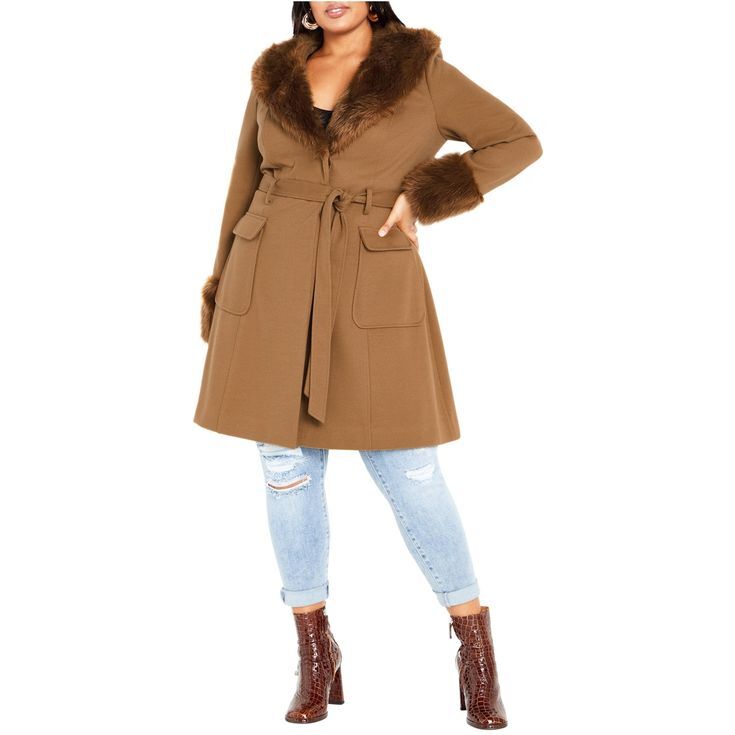
Sustainability and the Future of the Ermine Coat
As the fashion industry focuses more on sustainability, the future of the ermine coat may shift toward ethical alternatives. Innovations in textile technology have emerged, leading to the development of high-quality faux furs that replicate the aesthetics of ermine without the associated ethical concerns. Brands increasingly prioritize sustainability, presenting eco-conscious collections that appeal to a growing base of socially responsible consumers.
Incorporating sustainable practices into fur garment production can boost the popularity of ermine. This approach addresses important environmental and ethical issues. As artisans and designers prioritize sustainability, the ermine coat’s evolution becomes essential. It may help foster a more responsible fashion culture.
In addition, emerging awareness of ethical consumerism encourages brands to connect with their audiences. They provide transparency about sourcing and production methods. This shift empowers consumers to make informed choices. It fosters collaboration between brands and buyers, steering the fashion industry toward more sustainable practices.
The Timeless Appeal of the Ermine Coat
Ultimately, the ermine coat’s lasting allure lies in its combination of elegance, history, and cultural significance. It represents more than just a garment; it embodies a social status that transcends time. Whether worn by royals in centuries past or embraced by contemporary fashion enthusiasts, the ermine coat remains a testament to the enduring power of style and luxury.
It combines heritage with modernity, allowing it to remain relevant across various fashion eras. The adaptability of the ermine coat only adds to its fashion legacy, maintaining the balance between classic refinement and contemporary flair.
Furthermore, the narratives surrounding the ermine coat resonate deeply with societal standards of beauty and status. As cultural definitions of sophistication continue to evolve, the ermine coat serves as a reminder of the intricate interplay between clothing, identity, and social perception.
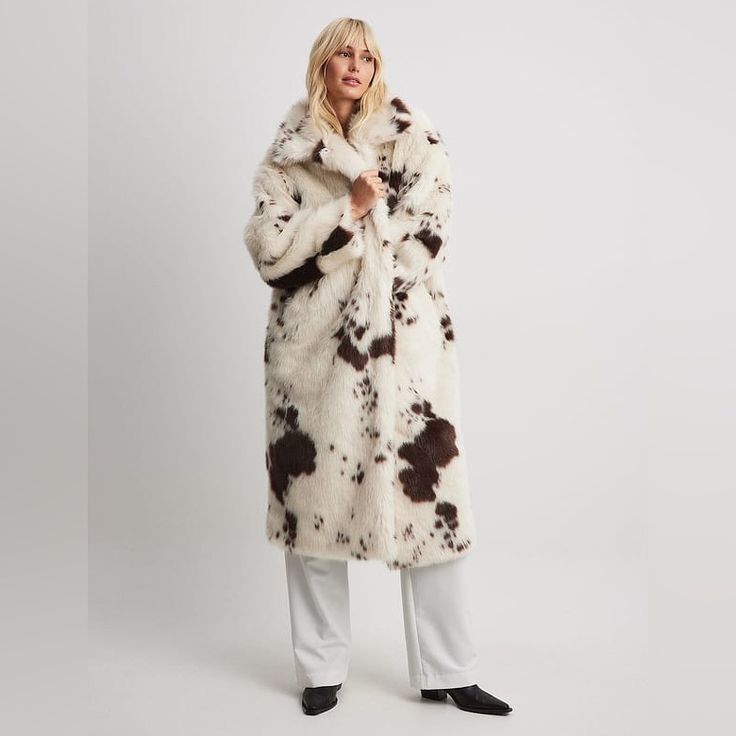
Conclusion
The ermine coat has traversed history, culture, and fashion, becoming a timeless symbol of sophistication. Its royal legacy and contemporary styles continue to captivate. As we address ethical fashion, the ermine coat stands at a pivotal moment, merging tradition with sustainability. By recognizing its significance, we can appreciate the coat’s allure and ensure its enduring presence in fashion history. Ultimately, the era of the ermine coat represents more than aesthetics. It celebrates artistry, heritage, and hope—a tribute to a lasting love affair with elegance through the ages.
